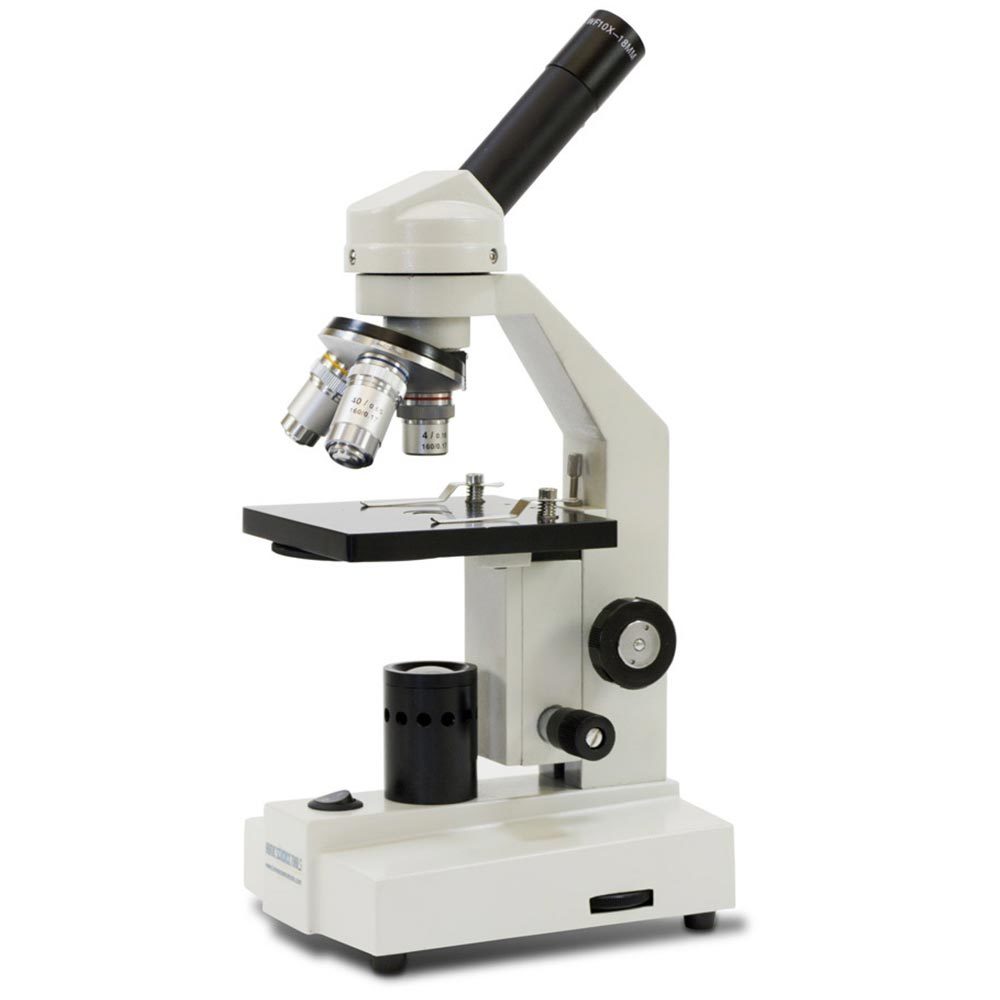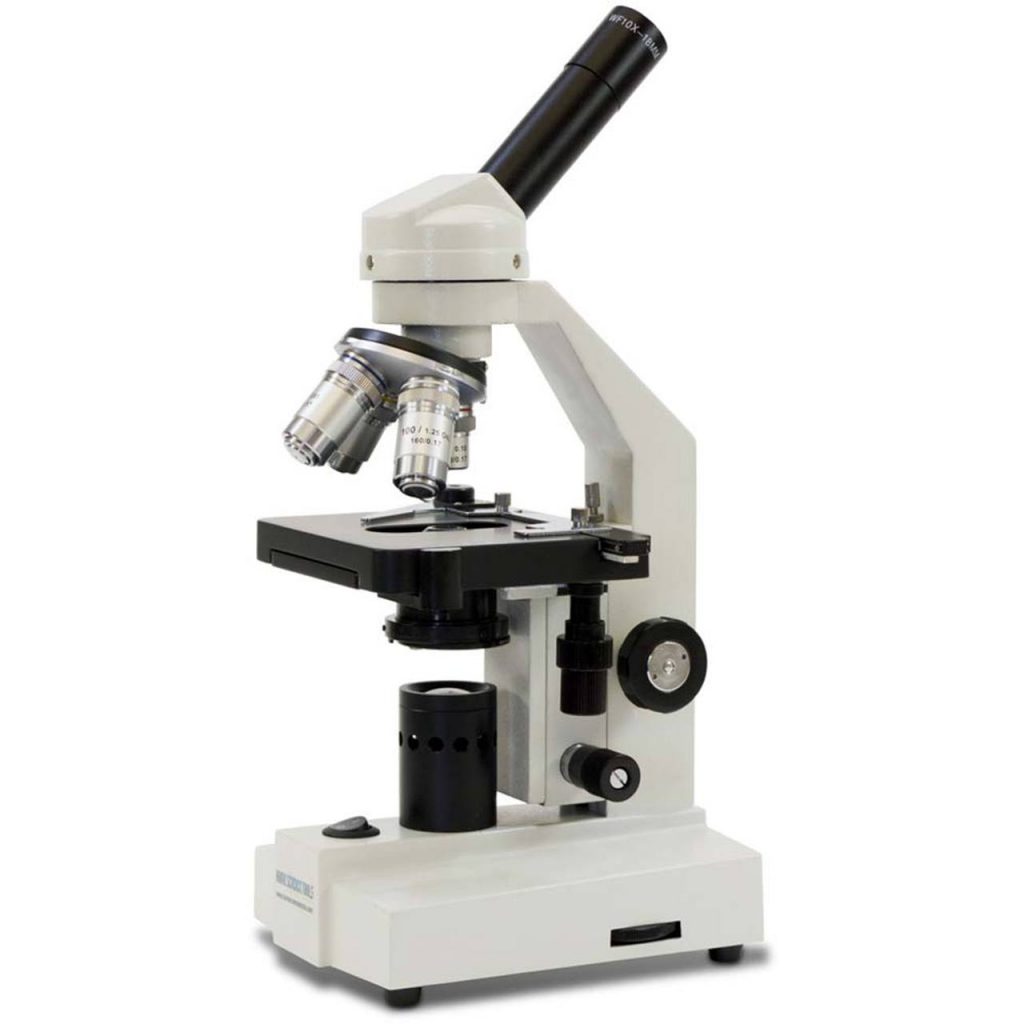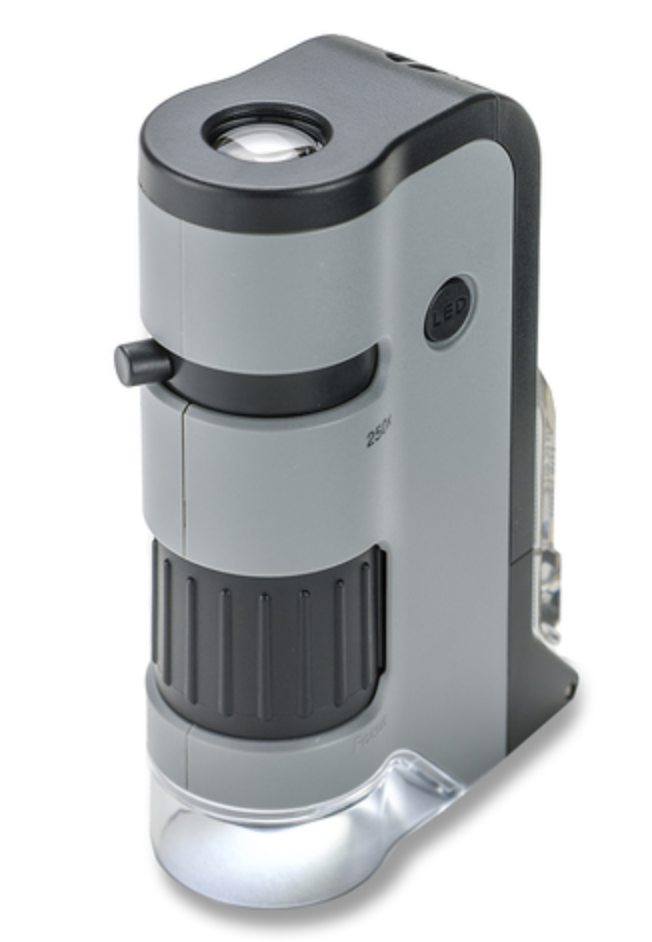One of the best homeschooling tools you can get for studying science is a good microscope. Looking through a microscope can give your kids a whole new perspective and understanding of biology. It can also help your kids learn correct scientific techniques that can give them a leg up if they choose to pursue college science degrees in their future.
However, picking the perfect microscope for your homeschooling needs can be confusing. It’s hard to balance the right price with getting a good quality home science microscope. For more tips on homeschooling science budgeting, check out my article on how to save money on science supplies.
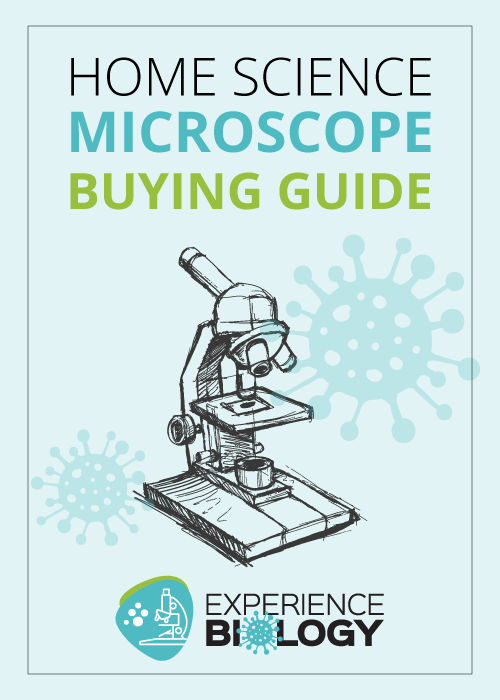
Why Do Homeschoolers Need a Microscope?
By the time kids get to high school, it’s difficult to use a science curriculum without a good-quality home science microscope. You might be able to get away with handheld magnifying glasses or cheap microscopes before that, but high school science curriculum, including Experience Biology, focuses on looking through microscopes to examine organisms and cells in greater detail.
In this home science microscope buying guide. I’ll walk you through the basics of what to look for and even give you some of my top pics for home science microscopes!
(Just skip to the bottom if you want a quick look at my recommendations.)
Types of Home Science Microscopes
There are several types of microscopes. The most common being stereo, digital, and compound microscopes.
- Dissecting or Stereo microscopes have a lower magnification than compound microscopes. They are best for looking at 3-D objects.
- Digital microscopes are the newest type and use the power of computers to view objects. Some of the bonuses to digital microscopes is that they can email images. They’re also typically more comfortable to use for long periods of time.
- Compound microscopes combine the power of lenses and light to enlarge the subject being viewed. It’s the most common type of microscope you see used in high school biology classes, allowing you to prepare slides to view underneath. This is the type of microscope I recommend for Experience Biology and other homeschool science courses.
What to Look for in a Good Compound Microscope
Of course, it goes without saying that if you want this to be an investment that holds up, you’ll want to purchase a microscope that has a sturdy metal frame — something durable!
But let’s talk about some of the other features you’re going to want to look for in a good, high-quality compound microscope that will serve your family well for years to come.
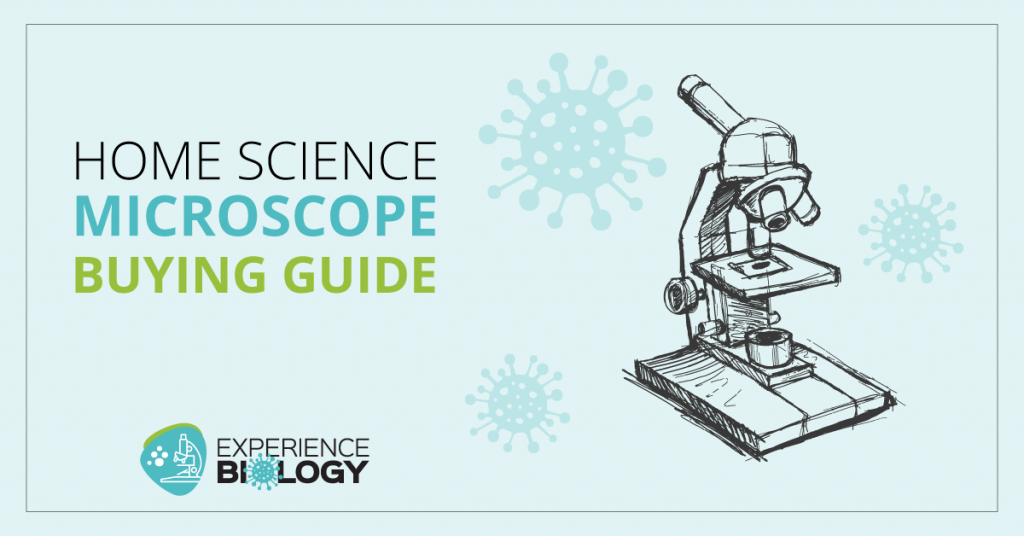
Eyepiece
Probably the first things you’ll notice when looking at a microscope is the eyepiece.
Do you want a monocular or binocular eyepiece? That is, do you want to look through the microscope with 1 eye or 2 eyes? This is a not a right or wrong question. In fact, much of this depends on who will be using the microscope, how you’ll be using the microscope, and your budget.
- If you’ll be looking through the microscope for long periods of time, the binocular eyepieces are helpful and more comfortable.
- However, children often have an easier time looking through monocular eyepieces, and they tend to be easier to use. Plus, if budget is a concern, you’ll want to focus on finding a microscope with monocular eyepieces.
Another feature of eyepieces you’ll want to look for is a wide eyepiece: an 18 mm eyepiece. The lens opening will be quite a bit larger on an eyepiece with a wide field than one lacking a wide field.
The larger the field, the easier it is to see what’s inside. Having a wide field will make it easier for you to position your eye to your specimen. Also, having a wide field will allow you to see more of what you’re viewing!
Magnification
When it comes to magnification, a microscope magnifies in two places: there is an eyepiece lens and an objective lens (the objective lens is the lens closest to your specimen).
- The eyepiece lens of most education-quality microscopes will have a magnification of 10x.
- For most high school courses, you’ll want a microscope you’ll want to purchase a microscope that has objective lens with 4x, 10x, and 40x.
To determine the total magnification of your microscope, you multiply your eyepiece lens magnification by the objective lens magnification.
So if you purchase a microscope that has a 10x eyepiece magnification and objective lens’ that are 4x, 10x, and 40x, your microscope will provide magnification levels of 40x, 100x, and 400x.
400x is the minimum magnification you’ll want for viewing cellular structures at the high school level.
If you can find a microscope in your budget that has an objective lens magnification of 100x (for a total of 1000x magnification) that will give you an even better view of those tiny structures!
Resolution
When it comes to resolution there’s a few points to keep in mind.
First, while the magnification of an 20x objective and 20x eyepiece would be the same as that of a 40x objective and 10x eyepiece (both give you 400x), the 40x objective and 10x eyepiece will give you much better resolution.
In other words, your resolution comes from the objective lens, not the eyepiece lens: the eyepiece lens simply magnifies the resolution provided by the objective lens.
Also, glass optics are a must have. Do not purchase a microscope with plastic optics. Plastic optics often seen in cheap microscopes or toy microscopes marketed to kids. Plastic optics will result in blurry images.
Adjustment Knobs
On the side of a microscope you should look for a couple of knobs. These are knobs work by raising and lowering the microscope stage or body tube of the microscope (depending on construction) in order to bring your specimen into focus.
You’ll want a microscope with both coarse and fine adjustment knobs.
Light Source
One of the final features you want to look at is the light source.
If you happen to come across an old-school microscope using mirror illumination, it might be fun to play with, but for your homeschool science microscope you’ll want to look for more advanced lighting!
Today, you’ll find microscopes that use one of 3 light sources: incandescent, LED, or fluorescent bulbs. Occasionally you may also see halogen lighting in microscopes, though these are typically found in research and medical microscopes.
The best lighting for your microscope will come from LED or fluorescent bulbs. If you choose to go with a binocular microscope, I’d suggest looking for LED lighting.
Upgrades
If you can afford upgrades, here’s a few to consider for your compound microscope:
- Iris diaphragm for better control of the light
- Oil immersion lens for advanced biology
- Mechanical stage gives you greater control and makes it easier to move your slide around
- AC adaptor for more powering up options
Choosing a Home Science Microscope
Home Science Tools is my favorite online store for science supplies, including microscopes. They are a small company that caters to homeschoolers. However, Amazon also carries a number of good quality microscopes as well! Here are some of my top recommendations for microscopes.
Home LED Microscope from Home Science Tools ($349.95)
Home 1000x LED Microscope from Home Science Tools ($439.95)
Bargain Microscope! Amscope 40x – 1000x from Amazon ($90.99)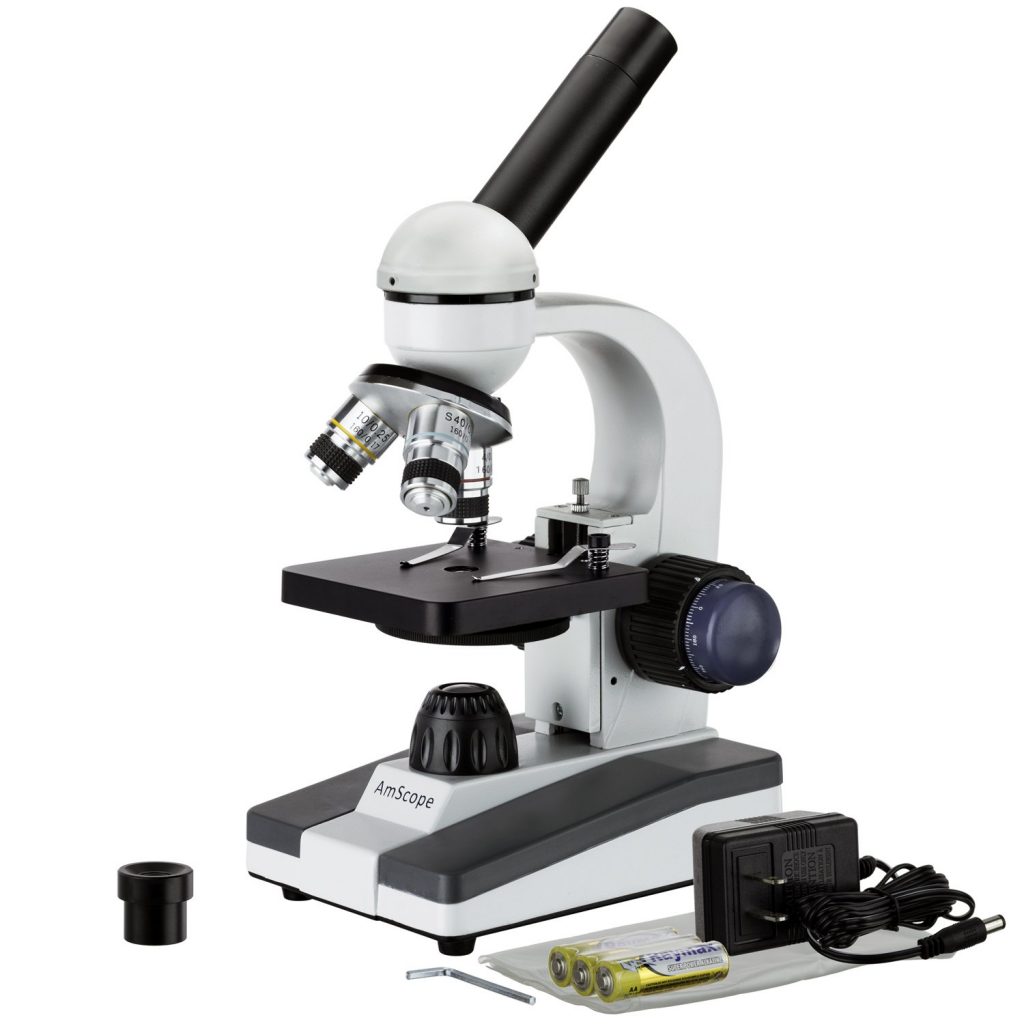
Omax 40x – 2000x Binocular Microscope from Amazon ($277.99)
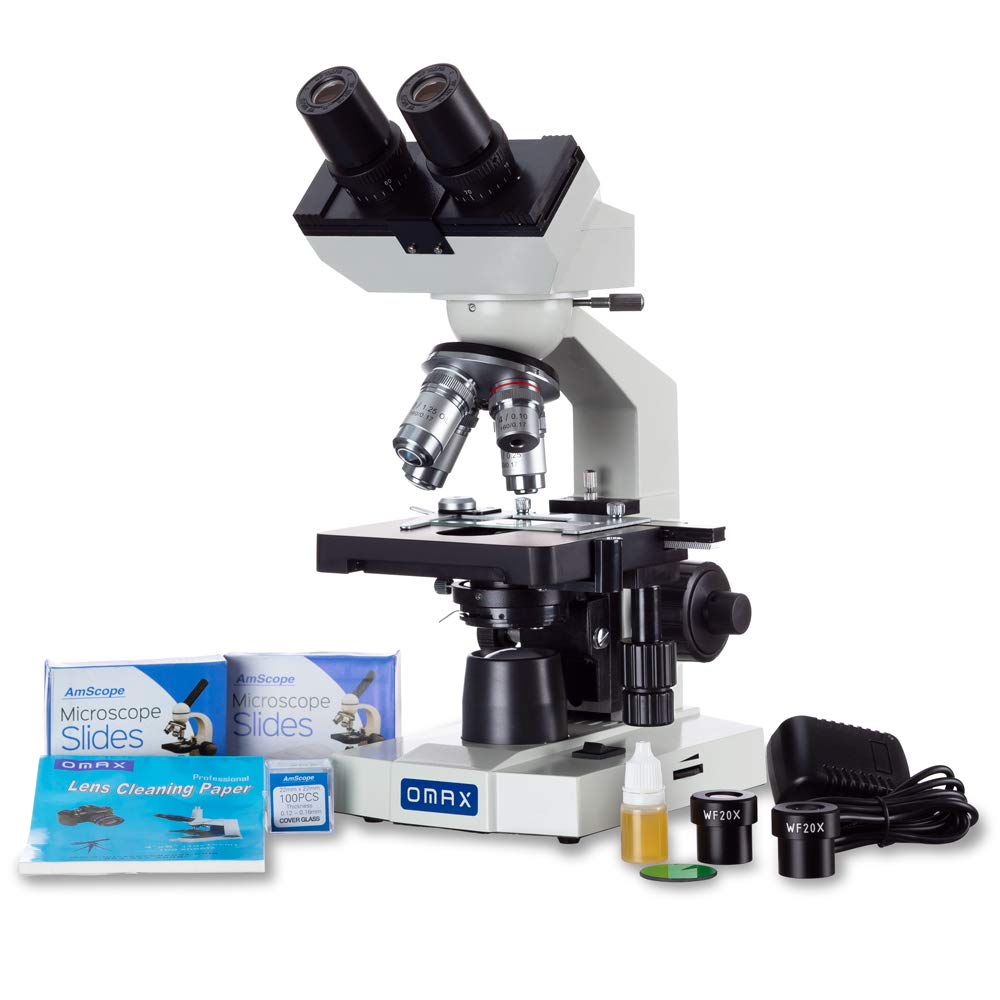
Choosing the best microscope for homeschoolers doesn’t have to be hard. With some careful research and planning, you will be better able to get your kids ready for an awesome science school year!
Home Science Microscope for a Tight Budget
If buying a compound microscope to use in your homeschool just won’t fit in the budget, consider purchasing an affordable pocket microscope ($32.95). While not as powerful as the above microscopes, this microscope will allow you to see structures at up to 250x.

